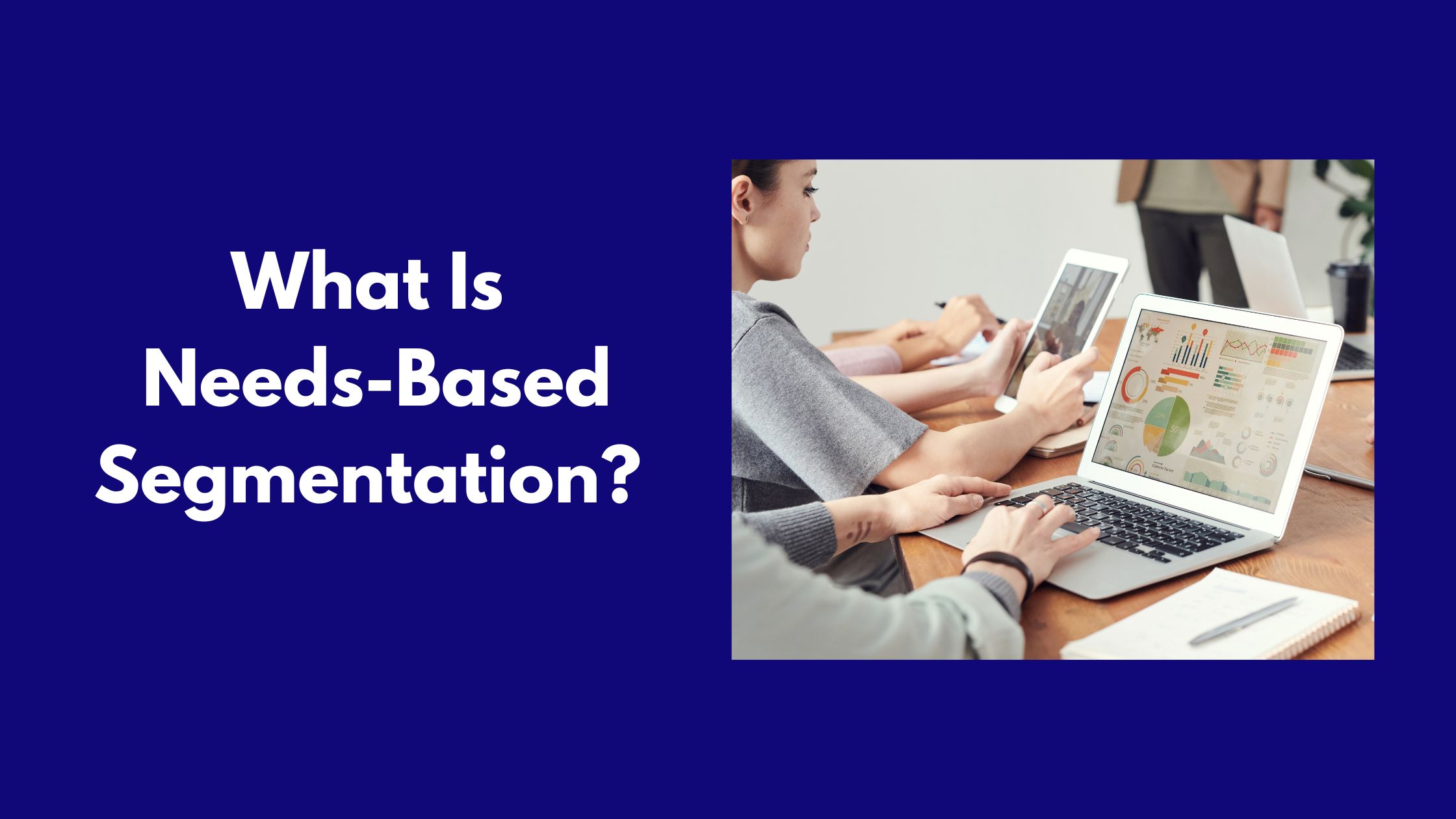Psychographic Segmentation in Marketing: The Complete Guide
In marketing, segmenting customers means better results.
Understanding your customer is the first step in creating your marketing strategy and campaigns. Customers today are demanding and traditional marketing won’t help you get far.
It’ll probably just break the bank and send you packing.
But how do you better understand your customers? And more importantly, how do you use this understanding in your e-commerce digital marketing strategy? The best way to start is to segment customers.
First, you need to consider the 4 types of customer segmentation and which one you’re going to use. Many businesses rely on demographic segmentation.
But what about psychographic segmentation? Are there any prominent examples of psychographic segmentation in use?
In this article, we’re going to focus on what psychographic segmentation is, how it works, and why it’s important. We’ll also share some examples of psychographic segmentation by companies like Nike, Apple, and others.
What is psychographic segmentation?
Psychographic segmentation is the process of segmenting customers based on psychological attributes like their values, desires, attitudes, goals, and beliefs. This also includes customers’ personality traits and lifestyle choices.
The 4 main types of customer segmentation are:
- Demographic segmentation (age, gender, language, occupation, ethnicity, and religion)
- Geographic segmentation (country, region, city)
- Behavioral segmentation (habits and patterns)
- Psychographic segmentation
Most businesses rely on demographic and geographic segmentation in their ad targeting. And it’s not a bad strategy. But it fails to look at customers – who are ultimately people – at a deeper level.
That’s where behavioral and psychographic segmentation come in.
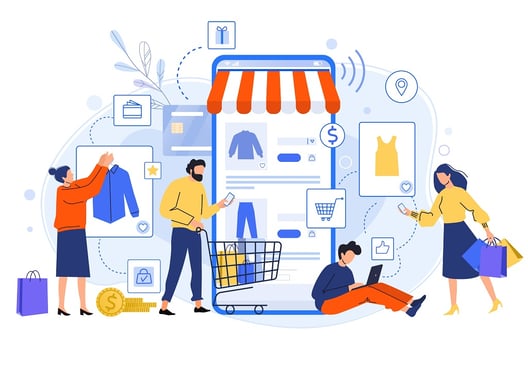
Psychographic segmentation vs behavioral segmentation
If you’re wondering about the differences between psychographic and behavioral segmentation, then you’re on the right track. They do seem similar.
Behavioral segmentation focuses on buying habits, patterns, and preferences.
Do your customers buy your products once a month? Three times a year? Weekly? How often? Do they prefer to buy your products in bulk?
Businesses can use behavioral segmentation to tailor ads and offers and create reminders for customers. It’s a great way to include some personalization in your ads strategy.
Meanwhile, psychographic segmentation goes a step further by looking at human psychology. It’s about understanding how customers buy based on their values, ideas, personality, lifestyle, interests, and emotions.
All this contributes to creating your buyers’ personas and using them to market your services and products.
Psychographic segmentation and demographic segmentation
We’ve mentioned that many businesses often segment customer based on demographics such as age, gender, and marital status…etc.
But the best way to get the most out of your customer data is to combine the different types of segmentation in your ads. This means a narrower but more focused audience.
Let’s look at how psychographic segmentation complements demographic segmentation and gives you a deeper view of your customer.
The following is a demographic and psychographic customer profile of Amelia, a banker, who wants to lead a healthy lifestyle. This profile is created with the food industry in mind. Think of online businesses that sell frozen food, low-calorie foods, dietary supplements, among others.
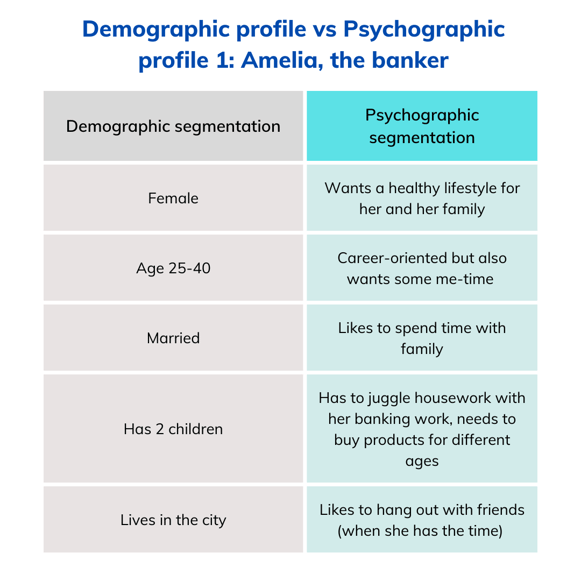
Looking at this profile, a food brand can target Amelia via social media with creative but healthy meals. Things like: 5 ways cook potatoes without worrying about calories (could be a slideshow for Instagram or even a series of videos on TikTok), tips on cutting cooking time, and more.
However, had the food brand just looked at the demographic data, they would not have understood Amelia’s pain points. So, even if their ads appeared in Amelia’s feed, she was unlikely to click them or make a purchase because they didn’t address her problems.
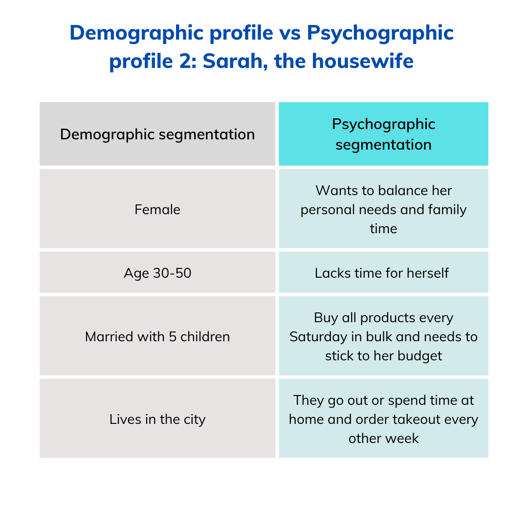
Looking at Sarah’s customer profile, that same food brand would need to tailor its ads to Sarah’s needs.
Like Amelia, she wants to save time. But unlike Amelia, Sarah needs to buy products in bulk and cut costs.
Is that food brand even a good fit for Sarah? Should they target her in their ads?
Or maybe they have a few options that can work for Sarah like subscription-boxes or buying wholesale.
But… what if it was Daniel – Sarah’s husband – was the stay-at-home dad, while Sarah was busy working in a school or elsewhere? The demographic targeting would be different to start.
And what if they lived in the suburbs or the countryside? Would the food business deliver to them? Will the family have to pay higher shipping fees? Can they afford it? Would they even be a target audience for the food brand?
These are all questions that fall under psychographic marketing segmentation. They are questions you need to ask yourself and your customer.
As you can see, demographics offer the most basic information about a customer. And it’s a good starting point.
But psychographics offer insight into each person’s desires, pain points, as well as their buying behavior.
Why psychographic segmentation is important
To use psychographic segmentation in your marketing, you must first be aware of the benefits of using this segmentation method.
The above examples should give you an indication why it’s a beneficial strategy in your marketing arsenal.
Now it’s time to dig into the benefits of using psychographic segmentation in marketing:
1. Better understanding of your customers
It’s one thing to look at the age and gender of your customer. But customer psychographics go deeper. Not only does psychographic segmentation let you see customers as people, but also gets you to treat them as such.
Getting a clearer understanding of how your customers make their buying decisions can support your marketing strategy and efforts.
2. Better communication
There are many types of retail customers that come to your online store. Using psychographic segmentation will help you communicate and connect better with these different customers.
3. Enhanced ad targeting
With a better understanding of their needs and desires, you’ll be able to improve your ad targeting strategies. This, in turn, will improve your return on ad spend (ROAS).
Your understanding of your customers’ beliefs, values, interests, and preferences will further help you target better lookalike audiences.
Bonus tip: If you’re using Convertedin, you’ll be able to segment customers in multiple ways. For example, you can dive further and divide them based on shared beliefs or preferences. You can also combine several types of segmentation into a single customer set.
4. More personalization
One of the benefits of customer segmentation in general, and psychographic segmentation in particular, is the higher level of personalization.
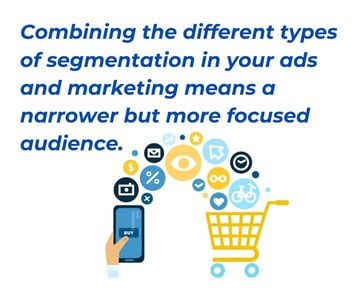 Your understanding of your customers’ most pressing needs helps you tailor your ads to speak to their emotions. You can use your customers’ pain points better and show them how your products help them overcome their problems.
Your understanding of your customers’ most pressing needs helps you tailor your ads to speak to their emotions. You can use your customers’ pain points better and show them how your products help them overcome their problems.
When customers see ads that solve their problems, they’re more likely to click, explore, and buy. Customization, or personalization, helps you overcome the barrier of creating generic ads that target far too many segments and rarely hit the mark.
5. More ways to reach customers
Segmentation isn’t limited to ads and targeting. Getting a clearer picture of your customers’ preferences means you’ll be able to meet them where they are most comfortable.
For example, you can expand the ways you reach customers to include:
- SMS marketing
- E-mail marketing
- Social media marketing
- Blog posts
- Video content
6. Build better customer relationships
Creating ads and getting customers to your website only to have them leave and click your ads again is a waste of money.
Using segmentation, especially psychographic segmentation, and showing your customers that you’re there for them, that you understand their problems and needs, allows you to build trust and a better relationship.
Having a long-term relationship with your customers means you can increase your customer lifetime value (CLV). This will translate into better customer retention, lower ad spend, and higher revenues and profits.
Further reading: 4 Customer Lifetime Value Mistakes You Should Avoid in E-commerce
How do companies use psychographic segmentation in marketing?
To get a better idea of you can use psychographic segmentation in your marketing efforts, let’s see how global brands are doing it.
While some of these brands are not in the e-commerce segment, their enhanced understanding of their customers has helped them grow and retain customers over the years.
- Harley Davidson
The motorcycle brand understands its customers’ psychographics and has created a community for them. Today, you can pick out Harley Davidson riders and fans easily from their rides and clothing and overall image.
The brand appeals to riders’ lifestyle, one that shows a rebel with ‘born to ride’ attitude. Harley Davidson’s customers are “passionate about their bikes and typically range from age 25-40 from an upper middle-income status with disposable income.” (Survey Monkey)
- Snapchat
The social media platform was among the first to create the ‘vanishing’ stories and content. The brand combines customer demographics and psychographics, focusing on youth and teens who enjoy ‘vanishing’ content.
- BMW
The German carmaker caters to a select audience: high-end, high-income individuals often at the height of their careers.
BMW buyers are people who appreciate beauty and premium quality. These traits are part of BMW’s psychographic profiles for its current and future customers.
Examples of psychographic segmentation in marketing: Apple and Nike
The abovementioned brands aren’t the only ones using psychographic segmentation in their marketing to better target and connect with customers.
Business giants Apple and Nike have each used psychographic segmentation to drum up business.
Let’s see how each brand has benefits from psychographic segmentation:
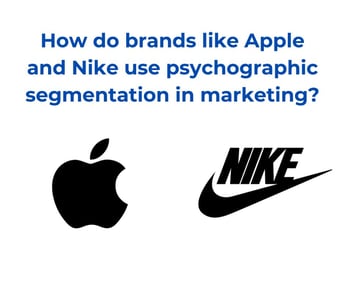
How does Apple use psychographic segmentation?
Tech firm Apple expertly uses psychographic and behavioral segmentation. As a brand that caters to a global audience and customer base, the company also uses geographical segmentation.
However, as you will see, Apple doesn’t rely on geographic segmentation as much as Nike does.
“Apple's demographic market segmentation includes developing its products around the target customers' age, lifestyle, and occupation,” explains EdrawMind.
For example, its PCs are designed to cater to designers as well as software professionals. Meanwhile, its smartwatches cater to athletes, people who want to measure their heart rate, and others.
Apple’s target customers – the buyer personas – are well-off people who are “willing to spend more on technology products and services with advanced capabilities, functions, and designs,” notes EdrawMind.
“After years of evaluating [its] customers' characteristics, [Apple] has revealed that most of them tend to appreciate quality, performance, and design of tech products and services over the prices.” (EdrawMind)
How does Nike use psychographic segmentation?
As an international – and fairly pricey – sportswear brand, Nike has stores all over the world, which translates to a massive audience. So, when it comes to marketing, Nike uses several types of segmentation at the same time.
Moreover, the apparel brand focuses its marketing around ‘feelings.’ Whether it’s video campaigns, long commercials, its website, or simple static social media posts, it’s all about how customers ‘feel’ about themselves and the brand.
Though Nike’s target audience is primarily athletes, the company also focuses on people interested in doing and watching sports. Nike’s marketing targets certain lifestyles and makes customers feel athletic.
So where do customers psychographics come in? By targeting lifestyle preferences and choices, Nike’s ads and products are seen by:
- Athletes (its main target audience)
- Those who want to become athletic or athletes
- Those interested in sports and becoming like their idols
Nike then targets this market with ads created specifically for each region. While some of its ads – especially its commercials – are global, you’ll find some are directed to Middle Eastern audiences, while others are created for European audiences.
For example, when showing ads in North America, Nike focuses on American football and baseball. But when it’s targeting the UK or Australia, it features players from spots like Rugby. Its customers in Europe are more interested in football – or soccer – and its customers in India enjoy cricket.
So what’s Nike doing?
It’s using demographic, geographic, behavioral, and psychographic segmentation and customizing its ads based on region and country.
How to use psychographic segmentation to improve your marketing
As you can see in the above examples, brands can get closer to their customers using a customer segmentation strategy that focuses on psychographic segmentation.
Here are a few ways you can use psychographic segmentation in marketing:
- Use it for market research.
- Use it to create better customer and buyer personas.
- Use psychographic segmentation to improve your ad copy and targeting
- Narrow your target audience and divide them into groups based on interests, desires, and needs.
- Combine psychographic segmentation with demographic segmentation to enhance your ad targeting and increase your ROAS.
Further reading: What You Need to Know about the Difference Between ROI and ROAS
How to *ethically* collect psychographic data from your customers
Now that you’re clear on what psychographic segmentation is, its benefits, and how to use it in marketing, let’s see how you can ethically collect customer data.
As you know, data privacy laws are constantly being updated to preserve users’ data and information.
With psychographic marketing, the only way to learn more about your customers is to directly ask them.
Here are a few ways you can ethically collect data from your customers without breaking any laws or hurting anyone:
- Use surveys and questionnaires (customers can choose to participate or not to)
- Interview current customers
- Work with subject matter experts (SMEs) who understand your niche and products/services.
- Use pop-ups to ask quick questions to gather information
- Use Google Analytics and Google Search Console to track the customer journey and their behavior on your website
- Use social media marketing to ask questions and gather information about customer needs
- Conduct focus groups for your customers
-1.jpg?width=427&name=1(1)-1.jpg)
Bridging customer psychographics and data
So how can you use psychographic segmentation to build trust and grow your sales?
The most important thing you need to be aware of when it comes to psychographic segmentation is data. And while Google is clamping down on data, it’s not the end of the world.
You just need to be clear on what data you’re collecting from customers, how you’re collecting and using this data, and how you’re conforming to data privacy laws.
The biggest problems with customer data is:
- It’s too scattered
- You’re not aware of the data you have
- You don’t know how to use the data you have
- You don’t have a 360-degree view of your customer so you can’t identify their problems.
So what can you do about it? What you need is a customer data platform or better yet a customer ads platform.
A customer ads platform, combines ads automation software with a customer data platform. In other words, it’s software that gathers all your data in one place, combines repeated customer profiles, and gives you a unified profile for each customer.
It also shows you the social platforms your customers are on and where they interact with your ads so you can target them there.
Convertedin does exactly that. It takes all your excel sheets of data and combines repeated information to create a unified list of customers.
You may be thinking you have 3,000 customers, when the truth is you have 1,000 customers but each customer has 3 different entries in your data.
Segment customers and automate ads with Convertedin
We’ve talked a lot – I know – about segmentation, particularly psychographic customer segmentation. Now, we’ll show you what to do with all this information.
After all, the purpose of this marketing tech blog is to help e-commerce store owners and marketing managers drive more business through marketing.
Enter Convertedin.
Convertedin offers marketing technology software, designed to help e-commerce businesses get more by automating your ads. Convertedin helps you:
- Create lookalike audiences from your custom audiences.
- Increase the efficiency of your ad targeting to boost your ROAS.
- Automate your ad creation process across multiple social media platforms.
- Create highly-targeted ads on autopilot.
- Segment your retail customers based on demographics, location, behavior, psychographics or a combination of those.
Recently, Convertedin expanded its marketing stack to become a marketing operating system for e-commerce. This means that instead of having several software tools to manage your marketing efforts, you can now manage everything from a single location.
You can manage and automate your email marketing campaigns, SMS marketing campaigns, your ads, and more. Convertedin also serves as a customer ads platform which means you can upload and combine all your scattered data into Convertedin.
Our software will combine repeated profiles and ensure you have a clearer picture of your customers, their demographics, geographies, behaviors, and psychographic data (if available).
You can also get better insights with your own e-commerce pixel.
“An e-commerce pixel is a code you embed in your website to track customers' movements and behaviors. For example, where they are coming from, which page they are going to on your website, which page they bounce out the most from, etc.” – Convertedin
Final words
In its essence, customer segmentation is about grouping customers with similar characteristics to achieve better results.
Using psychographic segmentation in marketing is like taking a deep dive into your customers themselves. Their thoughts, their feelings, their values, their preferences, interests, and so on.
You’ve probably heard the advice that ‘not everyone is your customer.’ Even brands with a massive target audience (like Nike and Apple) can achieve better results and higher revenues with segmentation.
But to do so, you must first begin by understanding your customer.
Want to explore the benefits of using Convertedin and having all your marketing tools and insights in one place?
Book your demo with Convertedin or sign up to the platform. Convertedin is also available for Shopify merchants.



